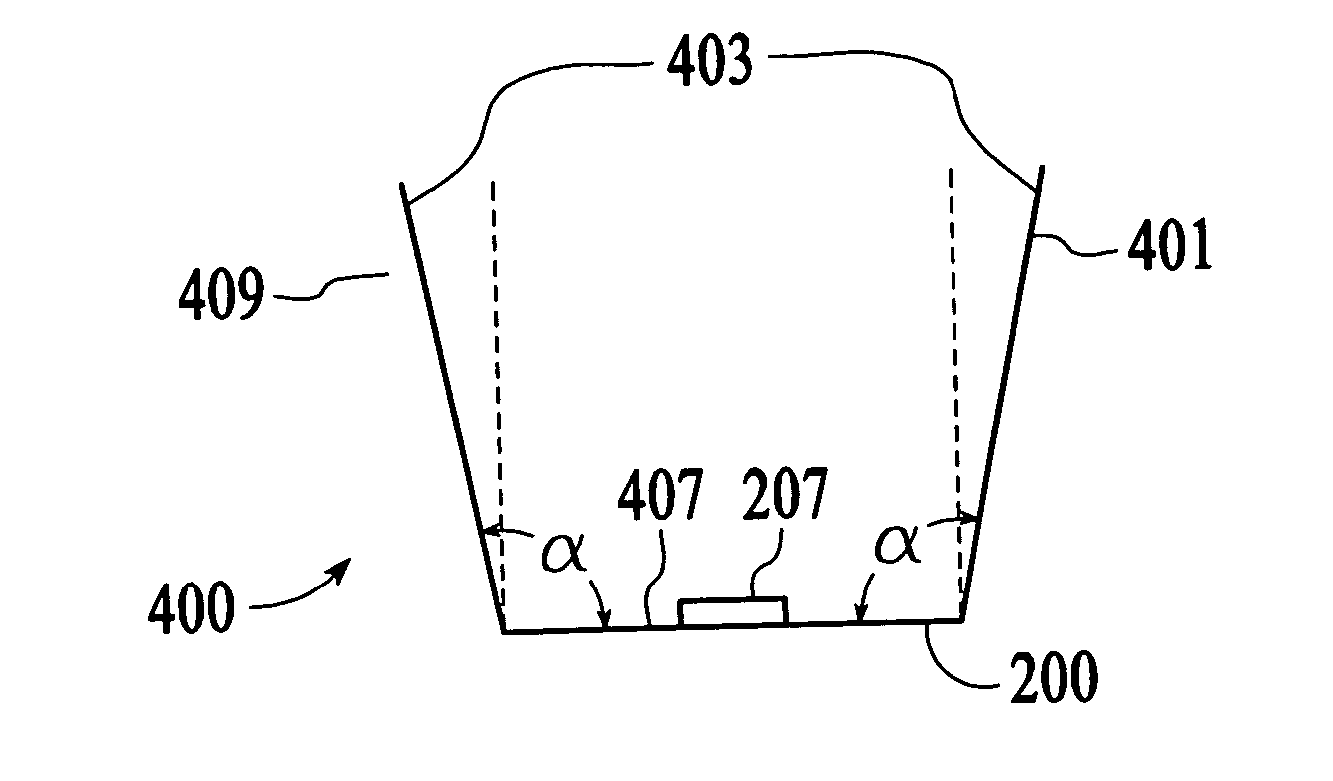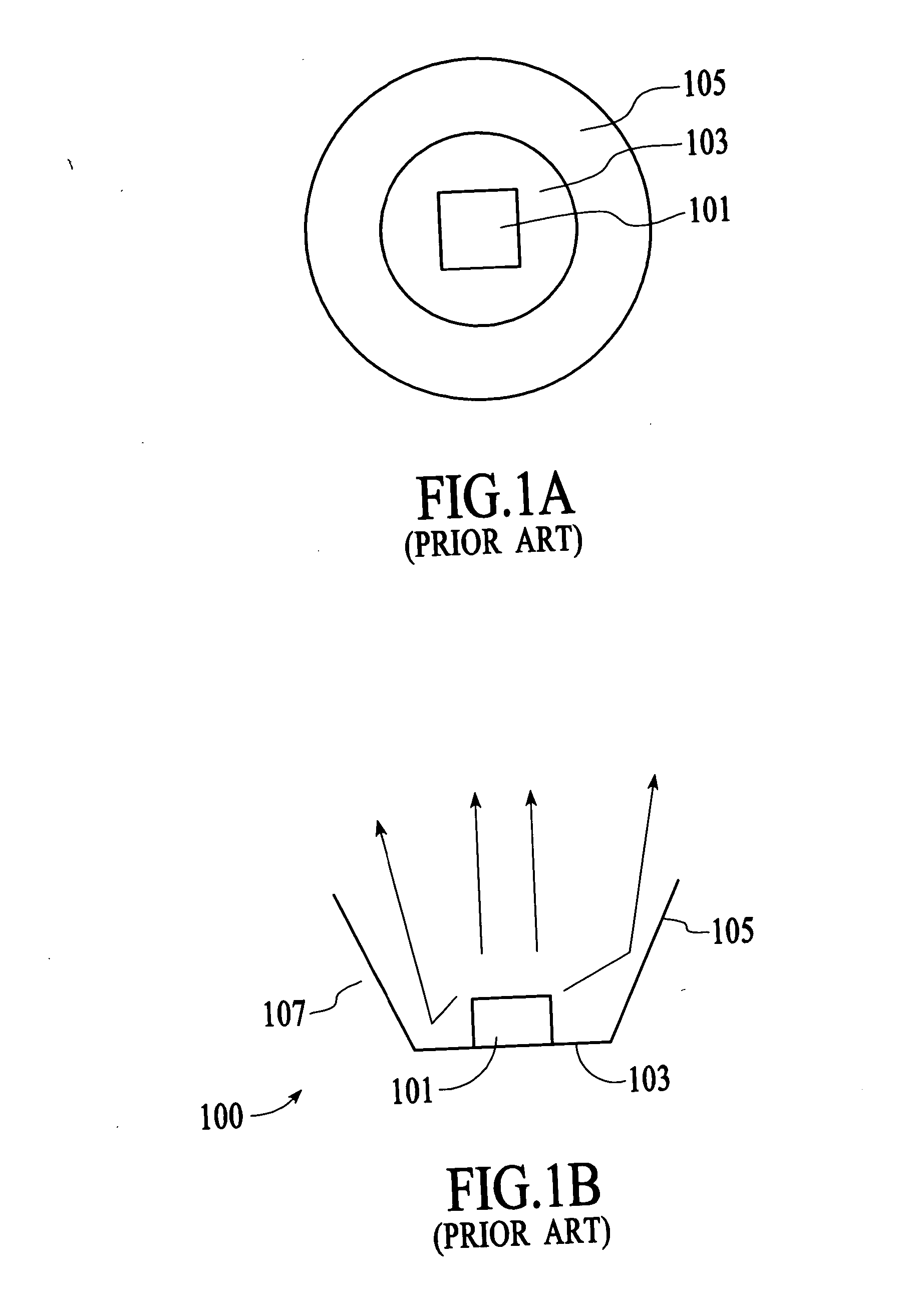Light emitting device with adjustable reflector cup
a technology of light emitting device and reflector cup, which is applied in the direction of semiconductor devices for light sources, point-like light sources, lighting and heating apparatus, etc., can solve the problems of often being too much or too little light being cast on objects, and achieve the effects of low reflectivity, high reflectivity, and increased aggregate reflectivity of the bas
- Summary
- Abstract
- Description
- Claims
- Application Information
AI Technical Summary
Benefits of technology
Problems solved by technology
Method used
Image
Examples
Embodiment Construction
[0028] A light emitting device has a light emitting diode (LED), a reflector cup, and one or more adjustment mechanisms to control the intensity profile of light emitted from the light emitting device. The reflector cup has a base and a sidewall extending outward from the base. A base adjustment mechanism controls the total amount of light reflected from the base by controlling the aggregate reflectivity of the base. FIG. 2A depicts a side elevational cross-cut view of an adjustable base 200 of a reflector cup (sidewall not shown), and an LED 207 disposed proximate the base. The adjustable base 200 includes a reflective base structure 203 and a base adjustment mechanism. According to the embodiment of FIG. 2A, the base adjustment mechanism includes an adjustable base aperture 201 disposed above the reflective base structure. FIG. 2B is a top plan view of the adjustable base 200 of FIG. 2A. The adjustable base aperture 201 includes multiple aperture plates 201A-201E. The exact number...
PUM
 Login to View More
Login to View More Abstract
Description
Claims
Application Information
 Login to View More
Login to View More - R&D
- Intellectual Property
- Life Sciences
- Materials
- Tech Scout
- Unparalleled Data Quality
- Higher Quality Content
- 60% Fewer Hallucinations
Browse by: Latest US Patents, China's latest patents, Technical Efficacy Thesaurus, Application Domain, Technology Topic, Popular Technical Reports.
© 2025 PatSnap. All rights reserved.Legal|Privacy policy|Modern Slavery Act Transparency Statement|Sitemap|About US| Contact US: help@patsnap.com



